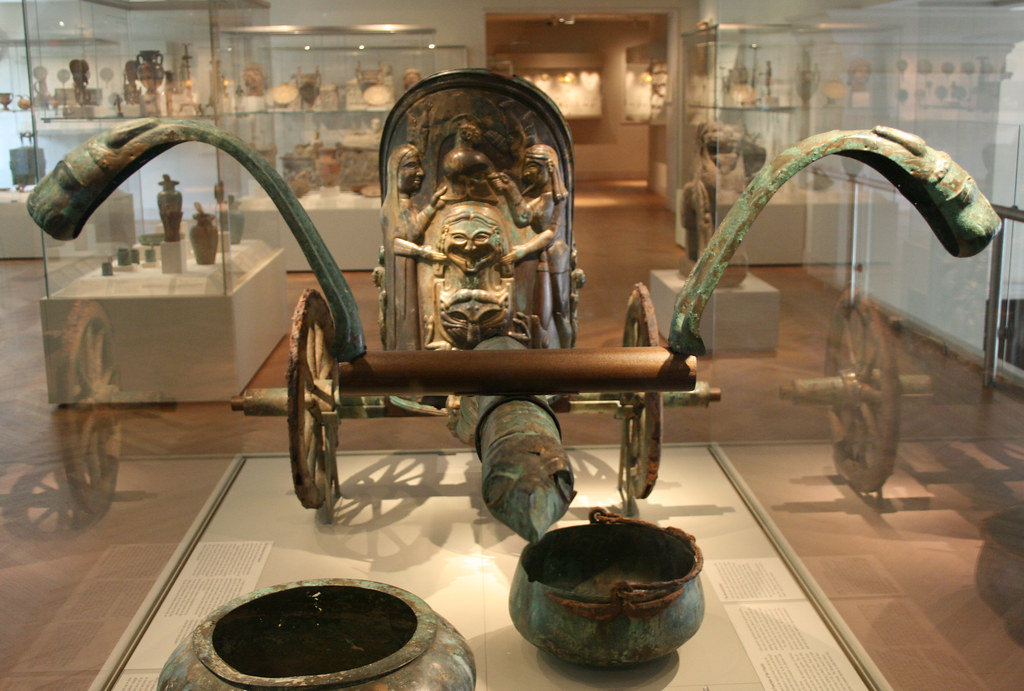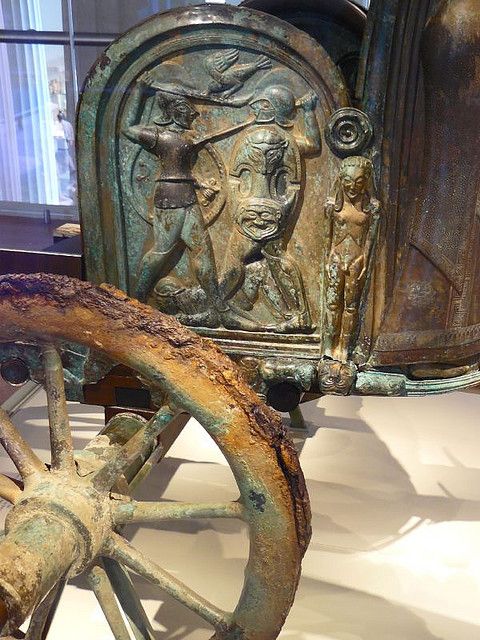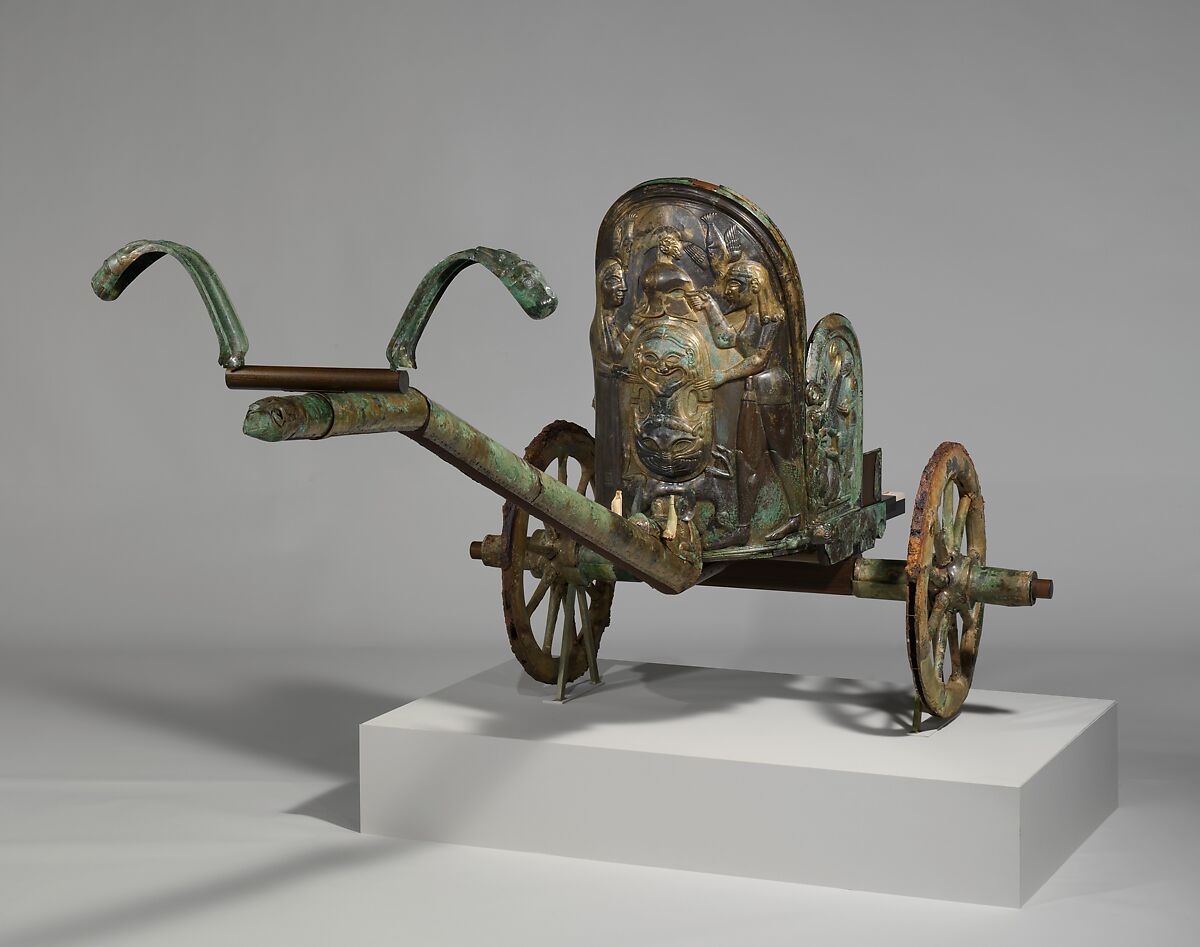The Monteleone Chariot stands as a testament to ancient Etruscan craftsmanship and artistry. Discovered in 1902 in Monteleone di Spoleto, Umbria, Italy, this remarkable artifact offers a rare glimpse into the grandeur of Etruscan civilization around 530 BC. Currently housed in the Metropolitan Museum of Art in New York City, the Monteleone Chariot is celebrated for its exceptional preservation and intricate design, making it one of the most significant archaeological finds of its time.
Discovery and Historical Significance
The Monteleone Chariot was unearthed in an underground tomb covered by a mound, containing the remains of two individuals and two drinking cups. Measuring 131 cm (51+5⁄8 in) in height, this chariot was designed for ceremonial purposes rather than warfare. Constructed from wood and adorned with hammered bronze plates and carved ivory decorations, the chariot is notable for its detailed Homeric iconography.
Carlos Picón, the curator of the Greek and Roman department at the Metropolitan Museum of Art, has praised the chariot as “the grandest piece of sixth-century Etruscan bronze anywhere in the world,” underscoring its exceptional quality and historical importance.
Description of the Chariot

Iconographic Details
The chariot features a range of Homeric themes rendered in relief. The central panel depicts the Greek hero Achilles receiving new armor from his mother, Thetis, after his original set was fatally lent to Patroklos. This scene is framed by a shield with a Gorgon’s head, adding a mythological element to the decoration.
The left side panel illustrates two warriors in combat, likely representing Achilles and the Trojan ally Memnon, while the right panel portrays Achilles’ apotheosis, ascending in a chariot pulled by winged horses. Additional scenes along the base of the chariot platform show youthful Achilles under the care of the centaur Chiron, and as a lion overpowering a stag and a bull. Two nude male figures flank the central scene, contributing to the chariot’s rich iconographic narrative.
Construction and Restoration

The Monteleone Chariot’s frame and plating are adorned with detailed renderings of animals and legendary creatures. Originally, it would have included inlaid amber and other exotic materials, but only the bronze and ivory decorations have survived. The chariot’s wheels feature nine spokes, a unique characteristic compared to other ancient chariot designs, which typically had four to twelve spokes.
In 1989, a comprehensive restoration project led by Italian archaeologist Adriana Emiliozzi revealed that the chariot had been assembled incorrectly during its initial restoration in 1903. Evidence also indicated that the chariot had been involved in a significant accident during its use. The restored chariot was reopened to the public on April 20, 2007.
Controversies and Current Status

The chariot’s journey from discovery to its current home has not been without controversy. Discovered by farmer Isidoro Vannozzi, who either hid the chariot or sold it as scrap metal, the chariot eventually changed hands multiple times before being purchased by J. P. Morgan in Paris. Morgan then donated it to the Metropolitan Museum of Art in 1903.
In January 2005, the commune of Monteleone launched a campaign to recover the chariot, but their efforts were not supported by the Italian government. The Metropolitan Museum of Art maintains that the chariot was acquired in good faith. To this day, a full-size replica of the chariot is displayed in Monteleone, allowing visitors to appreciate its grandeur and historical significance.
Conclusion
The Monteleone Chariot remains a symbol of Etruscan artistry and a pivotal piece of ancient history. Its intricate design, mythological scenes, and the story of its discovery and restoration highlight the chariot’s enduring legacy. As it continues to captivate audiences at the Metropolitan Museum of Art, the Monteleone Chariot stands as a remarkable example of ancient craftsmanship and a window into the past.

